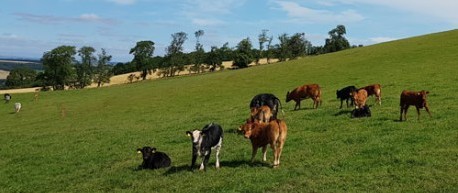Monday 10th February 2020, 10:00am
Scientists have identified regions in the cow genetic makeup linked with resilience to tuberculosis disease.

Researchers have mapped active and inactive genes in specialised lung immune cells, which play a key role in countering bovine tuberculosis (bTB) infections.
In order to infect cattle, bTB bacteria modify gene activity in the
cells’ chromosomes – packages of genetic material – the scientists
found.
Studies aiming to improve cattle genetics and resistance to bTB could benefit from these findings, led by scientists at University College Dublin (UCD) in collaboration with The Roslin Institute. Key lung cells, called alveolar macrophages, are the first immune cells to encounter the bacteria that causes bovine TB during infection.
In order to map which genes in these cells are active or altered during infection, the team investigated all the chemical changes in the chromosomes of infected macrophages.
During infection, the bacteria modify gene activity in macrophages to facilitate their survival inside these cells. Bovine TB is caused by infection with Mycobacterium bovis, which can also cause disease in other mammals, including humans. Bovine TB is a threat to both livestock and people, causing up to US$3 billion loss to agriculture each year.
"Our study will help to significantly narrow down the genomic regions of interest for breeding programmes to enhance the resilience of cattle to this important disease."
Professor David MacHugh, UCD"Bovine TB is a complex disease that is a threat to both livestock and humans and which has been difficult to control in many countries. We have used epigenomics to map regulatory elements in infected cells. Our findings highlight the importance of collaborating with international partners."
Dr Douglas Vernimmen, The Roslin Institute, University of EdinburghThe research work was funded by Science Foundation Ireland (SFI) and by the European Union through the international Functional Annotation of Animal Genomes (FAANG) Initiative, and it is published in the journal Frontiers in Genetics.
Source: The Roslin Institute